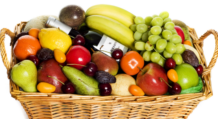|
Amy Bartels, Nutrition and Health Education Specialist, Laclede County, University of Missouri Extension As we age, we naturally lose a certain amount of strength in our large muscles. Arm and shoulder weakness and a reduced sense of balance can often make it difficult for seniors to do activities they enjoy. Home food preservation is one such activity. For many, just the thought of lifting the canner of water from the sink to the stove can cause them to abandon home food preservation altogether. In 2015, the National Center for Home Food Preservation added steam canning to the list of approved methods for safe home food preservation. Steam canning is a method in which filled jars in an enclosed pot are processed by hot steam. It’s also been referred to as “atmospheric steam canning” in order to clarify that it’s happening at a normal atmosphere or pressure as opposed to under induced, artificial pressure (i.e., pressure canning). Compared to water bath canning, steam canning cuts down on time and energy costs, as well as water usage. Unlike a water bath, a steam canner only uses approximately 1½ quarts of water when processing jars of home canned food. Water bath canners may require up to four gallons of water to fill up and cover the jars. As a result, home canning with steam is faster because you are heating less water. Steam canners are also easier to handle because they are flat-bottomed and lightweight, making it easier to move the pot from the sink to the stove burner. Another benefit to steam canning is the ability to preserve just a few jars at a time. Smaller batches can make the task more manageable physically as well as economically. In many cases, seniors move from a familiar kitchen into an apartment or other facility where appliances and utilities may differ from what they are used to. If you have a glass-top stove, steam canning can be a fantastic option. However, you need to make sure that your cooktop will maintain a constant heat while processing. Some burners cycle on and off with automatic shutdowns when heat gets excessive. If the burner shuts off during processing, food can be under-processed and unsafe to consume. A few tips to remember when processing using a steam canner:
For more information and resources, see Atmospheric steam canning – A new option. |




